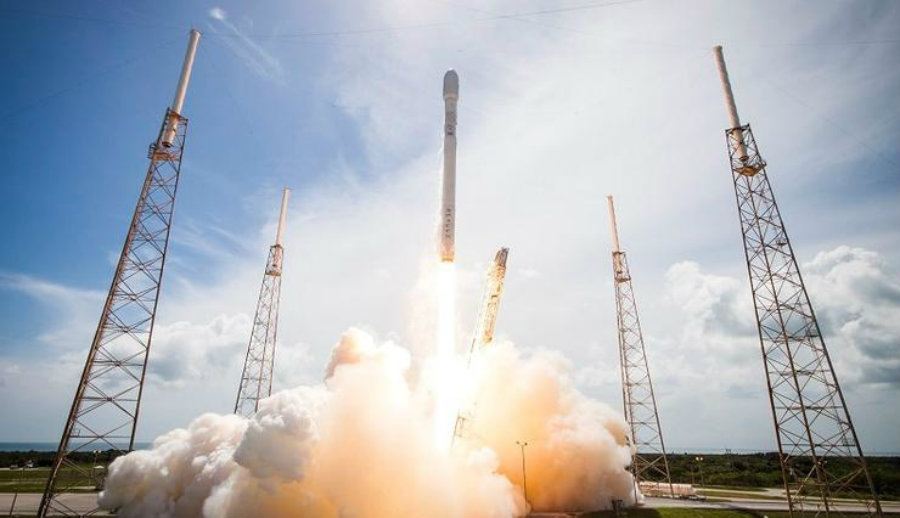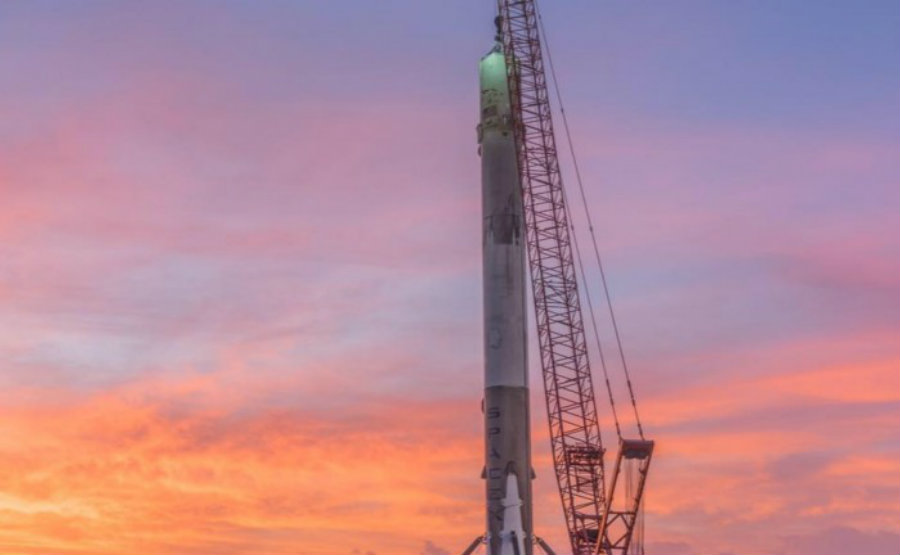Elon Musk’s private spaceflight company SpaceX has taken another step into making it so Falcon 9 rockets can be used on more than one mission. SpaceX released a video on Thursday featuring the launch sequence of a used Falcon 9 rocket, which had already been utilized in a mission back in May.
The test was labeled as “full duration,” as the fuel-burning stage took two minutes and a half to complete. One of SpaceX’s objectives is to manufacture reusable rocket boosters, which will be reflected in a substantial drop in the cost of spaceflight. Currently, space rockets dispose of their primordial engine after they’re used a single time.

To achieve this, SpaceX had to land their rockets safely so they can be used once more in the future. So far, the company has managed to retrieve five Falcon 9 rocket boosters, three of them in 2016.
Planes are not disposable and Musk wants the same for rockets
Although the test was not meant to reach orbit, it was a trial to see how the rockets reacted to a second launch procedure. Elon Musk has referred to the repeated use of rocket boosters as “fundamental” when it comes to achieving affordable space flight.
“It’s just as fundamental in rocketry as it is in other forms of transport – such as cars or planes or bicycles,” he stated back on April 8, after the first stage of a Falcon 9 rocket landed on a sea launch platform.
According to SpaceX President Gwayne Shotwell, the company is looking at a decrease of 30 percent in costs if the first stage of the rocket boosters is recycled. That would drive the price of the Falcon 9 from $61.2 million to $42.8 million. Customers believe that SpaceX is able to steadily generate 40 percent of the rocket’s costs as gross margin, equivalent to $36.7 million. Musk asserts that each first-stage booster could be reused over 15 times.
Some argue that the costs are not entirely clear due to the fact that the rocket must reserve fuel on its first stage so it can land safely. That additional fuel has a significant weight and acts against the overall performance of the rocket. Expendable rockets do not account for this feature. Musk has disregarded the performance costs and said that the only issue is the cost of the fuel itself.
According to analysts from Arianespace, one of SpaceX’s competitors, a reusable rocket should be launched at least 30 times in a single year to achieve profitability.
.@SpaceX Tests Used #Falcon9 at McGregror https://t.co/lj0F4BvoAb @LauraICP @ICPBen @AndrewICP @icpjerson @JamesICPSearch
— M E L L Y. ✌️ (@molfli) July 30, 2016
The next step in space exploration
Elon Musk insists that rocket reusability is the key that will allow humans to conquer space. Most of the costs involved in launching a spaceship are found in building the rocket itself, which only partakes in a single flight. When compared to commercial flights or public transport systems, these vehicles can perform dozens of travels per day, and thousands in its lifetime.
In perspective, the world’s most popular aircraft, the Boeing 737 costs between $51.5 and $87 million, depending on the model. A Falcon 9 costs $61.2 million, a price that’s expected to drop significantly due to Musk’s efforts in developing reusable spaceflight technology.

SpaceX managed to land a Falcon 9’s first stage in 2014. Subsequent efforts took into account what was learned from previous attempts, leading up to this day, when one of the rocket boosters was used on a second launching procedure. The following video shows a first stage of a Falcon 9 landing in April 2015.
The company now works with NASA, as it has performed cargo resupply missions to the International Space Station. Currently, there have been no manned flights from SpaceX, but the Dragon spacecraft that is delivered on the launch of Falcon 9 rockets is now being redesigned to become crew-ready. SpaceX has at least 70 launches under its wing, adding up to $10 billion in contracts with companies from all over the world.
SpaceX is expected to launch satellites into orbit thanks to their Falcon Heavy rocket, which is arguably the most powerful rocket to ever launch from earth’s surface. It features three core boosters with nine engines each, very similar to a Falcon 9’s first stage. There are plans to make Falcon Heavy reusable as well, which means that all three of its engines will have to land back down on earth.
To send three rocket boosters to space, detach them from the rocket, and to then land them safely back on earth will be an engineering achievement worth of praise. To handle this, SpaceX has started to manufacture more landing zones for its rockets, which would allow landing the three boosters in separate locations. This means that each booster has to me maneuvered separately, with their own set of variables and risks.
Elon Musk and SpaceX continue to push the boundaries and to leave competitors in the dust, basking themselves in being the firsts to accomplish plenty of feats in the field of space flight. Each Falcon 9 booster costs at least $30 million to be manufactured. To perform a launch with a used booster, the first stage has to undergo maintenance, which adds up to the costs and reduces savings. But it appears that Musk and his colleagues have carefully measured all of these factors, which is why SpaceX has become a pioneer in the current era of space entrepreneurship.
Source: Space

Well, there you have it, the least researched, most competitor quoting article published in 2016. Thanks for the drivel and wasting my time. If you’re lucky enough to have read this comment before the article, save yourself the aggravation and go on to the next story in your feed. This is sh1t3.
Could you elaborate? Most of the information comes from SpaceX and Musk himself. I’ll gladly read your insights!